Four Insights for Higher Education Retirement Plan Success
By Mathew Greenwald (Guest Blog for Voya)
11/29/2022
The last two years have created several challenges for higher education institutions. Like many other industries, colleges and universities have had to make several pivots to stay competitive. In this environment, it is critically important that retirement plans not only help higher education staff prepare financially for retirement, but they do so without burdening hard-working administrative staff.
To help colleges and universities meet their objectives, Voya surveyed higher education retirement plan decision-makers across the country to better understand their challenges.1 While this research provided a wide range of insights, there were four specific findings that, in my opinion, are of particular importance.
Insight 1: Make a strategic plan
Voya’s survey found that almost all schools think their retirement plan is doing a good job of helping their faculty and staff prepare financially for retirement. However, most respondents still want to enhance their retirement plan program.
What is the best method to select and design enhancements? Research suggests that it would be useful for colleges and universities, on an annual basis to:
- Review how the plan has done over the past year on key metrics
- Review and update the goals of the plan
- Brainstorm ideas to help the plan better achieve those objectives
Planning a dedicated annual meeting for these activities allows decision-makers and other institutional leaders to dedicate time to review data and collaborate on decisions.
“I think you come into a meeting like that with some ideas, but there might be some things in the data that we otherwise wouldn’t have seen or known about…so, we are able to take what we want to do and marry those ideas with the data. Then, we can come up with balanced decisions about where we go from here.” – Voya Survey Interviewee Response
It would be useful for the plan advisor, and perhaps a representative from the plan provider, to attend these meetings as well, as they are likely able to provide useful and informed perspectives. They can bring in new information and viewpoints that can contribute a great deal to the brainstorming process.
Insight 2: Help staff make benefits decisions
Retirement plan decision-makers clearly understand how difficult it is for their faculty and staff to make decisions about which employee benefit options to choose. This includes decisions about:
- How much to defer for retirement
- Which health insurance option to select
- Which other benefits to select, including:
- life insurance
- disability insurance
- critical illness insurance
- accident insurance
- health savings accounts
- flexible savings accounts
- other ancillary coverages
This is particularly hard for younger staff, and the task has been made even more challenging due to inflation. Complex trade-offs must be made, and many staff and faculty need help in making these important decisions.
What if employees had an online tool that made recommendations on how much to put into each employee benefit? The people interviewed all stated that such a function could provide high value to their faculty and staff.
“People are given a lot of options. I know we have six different health plans, so if you’ve got all these options, you kind of need a decision tool to help you make your choices.”
“I think it would be worthwhile for people that, again, have lots of options and they’re trying to figure out what the best package is.”
-Voya Survey Interviewee Responses
The fact that the tool is online is also important. One decision-maker said that some of the staff in her institution are reluctant to provide personal information to HR staff and are much more comfortable with the anonymity that an online tool provides.
In sum, the people interviewed believe that a tool like Voya’s myVoyage digital tool can help their employees make better decisions. It would be useful, I believe, for colleges, universities and all employers to seek this functionality from a benefits provider.
Insight 3: Recognize under-served employees’ needs
Diversity, equity, and inclusion (DEI) have long been important to institutions of higher education and the Voya survey found that 82% of these institutions have made developing and expanding a DEI hiring strategy/program more important since the start of the pandemic.
Does the data show that minority employees are participating in their retirement plans? It’s interesting that the decision-makers we interviewed said, while DEI is very important to their institutions, most have not looked specifically at how their under-served employees are participating in the retirement plan. Such a review would be valuable and is certainly aligned with the values of these institutions.
Decision-makers may be surprised to learn about the disparity between race groups when it comes to retirement readiness2. Having the capability to review this data, as Voya does, may illuminate if minority employees are not participating in the retirement program to the same level as others at similar salary levels. Knowing this information can help the college or university communicate and be proactive in empowering faculty and staff to take better advantage of their benefits.
Insight 4: Communicate overall value
The biggest challenge colleges and universities are now facing, according to the survey, is attracting and retaining staff. While this has been a long-standing challenge for many institutions, it has certainly been exacerbated by the pandemic.
90% say their defined contribution plan helps them attract high quality employees.
What is the best way for colleges and universities to communicate the value of their retirement plan? Some colleges and universities report preparing a Total Compensation Statement which shows the total value of the school’s offer, including the amount the school would contribute to the retirement plan, health insurance, and other employee benefits.
While this works well for some, it is my viewpoint that a new approach may be worth testing. In addition to a Total Compensation Statement, it may be useful for colleges and universities to provide a statement which shows how much is contributed to an account over a five or ten-year period when a new employee meets the match. This statement would demonstrate the real benefit of a retirement plan: its ability to accumulate money over time. Tools like Voya’s myOrangeMoney can show employees if their retirement contributions will accumulate enough over time to support them through a long retirement period.
4 takeaways for higher education retirement plan decision-makers
From the four lessons we learned from Voya’s research for colleges and universities, these are my recommendations.
- Schedule an annual retirement plan meeting to review data and brainstorm improvements.
- Get online tools (like Voya’s myVoyage that help employees choose the benefits that are right for their unique needs.
- Review your retirement plan data and encourage under-served employees to contribute to their retirement plans.
- Communicate the overall value of the retirement plan with all contributions accounted for over time. Voya’s myOrangeMoney can help with this.
You can compare your institution’s plan with the results of the Higher Education Retirement Plan Survey here. You can also visit Voya’s Higher Education Industry page to learn more about Voya’s commitment and experience in the field.
1: Voya conducted a survey of 301 decision-makers in higher ed institutions and supplemented this with in-depth interviews with seven decision-makers. Greenwald Research was engaged by Voya to help design and implement this research. Voya has made the report on this research available to all higher education institutions here.








